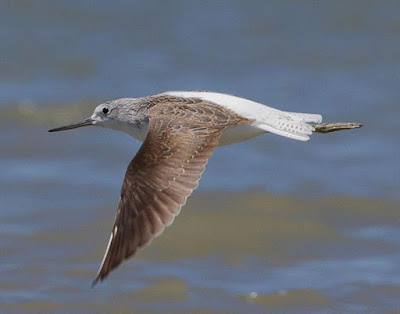September means Skiathos where Sue and I join the Boomerang Club, people who return year after year to this very special Greek Island. Don't forget - click the pics.
Skiathos is the most popular of the Sporades, the group of islands east of Volos and north of Evia on mainland Greece. The island of Skiathos is actually an extension of wooded Mount Pelion 100 miles away on the mainland and the scenery reflects this. Skiathos is a green island with pine forests and abundant water with fig, olive, plum, and almond trees, as well as grapes.
Skiathos
Leaving Skopelos
Skiathos embraced tourism many years ago where on glistening beaches, wooded hillsides and in peaceful valleys are a number of the finest hotels in Greece. We stay in one such place that shall remain our secret.
Skiathos has much to offer people of all ages and nationalities from Northern climates seeking a blast of September sunshine. We find ourselves amongst fellow Brits, East Europeans, Finns, Danes, Norwegians and even the occasional German. Luckily we don’t do lying on the beach so the sunbed issue never arises, but the queue for the bus to lively Skiathos Town at 1800 hours can be problematical.
"Every September Skiathos holds the Katsonia Festival held in memory of the submarine Lambros Katsonis sunk on 14th September 1943 close to Kastro, the former capital of Skiathos located on the northern tip of the island."
Memorial to the sinking of Lambros Katsonis
"Whilst trying to intercept a German troop transport during World War Two, the Lambros Katsonis was sunk by the German submarine chaser UJ-2101. This tragic event resulted in the drowning of 32 crewmen, including the ship’s captain, as well as 15 other crew captured by the Germans.
Amazingly, three of the ship’s crew – Lt. Eleftherios Tsoukalas, the ship’s executive officer, and petty officers Antonios Antoniou and Anastasios Tsigros managed to swim to the shores of Skiathos, an epic feat which took them nine exhausting hours. They hid on the island until they eventually managed to return to Egypt and rejoin the Greek fleet.”
For beach lovers there are over 60 sandy beaches in Skiathos, including Koukounaries rated 7th best beach in the world and best in Greece. Banana Beach just around the headland is the island's only naturist beach, perhaps because it is more remote and very sheltered. Most of the beaches are easy to reach by bus or moped as they are generally alongside the only main road on the Island and reached by following a track or dirt road.
Ligaries or Kechria?
Jimnys
Skiathos
The remotest north-coast beaches like Ligaries, Mandraki and Ttsougria are accessible only by jeep, dirt-bike, foot or donkey.
We hire a Jimny jeep for our stay even though there is an excellent bus service that plies frequently between Skiathos Town and Koukounariés resort, 7.5 miles west. The buses call at 26 numbered stops where our own is Bus Stop 16, the small resort of Agia Paraskevi at the entrance to Platanias valley.
The often crowded bus, standing room only, is an essential Skiathos experience where the aromas of a day on the beach, mozzie cream, wasp deterrent and a meal of garlic mushrooms & tzatziki make for a heady experience.
The often crowded bus, standing room only, is an essential Skiathos experience where the aromas of a day on the beach, mozzie cream, wasp deterrent and a meal of garlic mushrooms & tzatziki make for a heady experience.
Skiathos Bus
The Jimny is essential for exploring the more remote parts of the island where their remoteness involves often tortuous, bouncing progress over terrain badly rutted by winter storms that cascade off steep hillsides onto unmade tracks below.
Skiathos jeep
View from Kanapitsa
The success of the first Mamma Mia filmed in 2007 around neighbouring Skopelos created a sort of mass-hysteria when people who loved the movie travel to Skiathos looking for the island depicted in the film. The cultists may not find those actual scenes, rarely meet up with Meryl Streep, Pierce Brosnan or Donna, but are never disappointed.
Mamma Mia
In Skiathos Town cafes, gyro joints and tavernas line the sunny boulevard where pristine yachts shine in the everlasting sun. Goldie Hawn is rumoured to be a regular in Fresh Café, hot from her $30 million yacht moored off-shore. We can vouch for the coffee and the wedge of marbled cake that arrives with each order but we have yet to meet Goldie.
Skiathos
Eating out each evening without worrying about the washing up is something of a bonus. And it doesn't cost an arm and a leg.
Souvlakia
Taverna Maistrali
No Name Gyros - Skiathos Town
Skiathos is a beautiful island where the only drawback is the difficulty of arriving or leaving due to the airport's notoriously short runway and summer thunderstorms that emanate from the hot mainland. Delays and cancellations are the stuff of legend. Touch wood. We have experienced the spectacular thunderstorms that light up the night sky but not the resulting delays.
Skiathos Landing
The birding here is casual, an adjunct to the holiday of relaxation and the vibes of Greece. Yes, there are birds to be found, especially since I seem to be the only birder on the island. Just as we like it.
Come late September the island winds down from the hectic five months of tourism when many businesses close and their owners return to Volos, Thessaloniki and Athens for the winter.
Skiathos subsides into normal as those left on the island breathe a sigh of relief until it’s time to start all over in May of the following year.
Back soon in Blighty. Now watch the video for a real feeling of Skiathos.
Ferry to mainland Greece
Skiathos subsides into normal as those left on the island breathe a sigh of relief until it’s time to start all over in May of the following year.
Back soon in Blighty. Now watch the video for a real feeling of Skiathos.

















































































